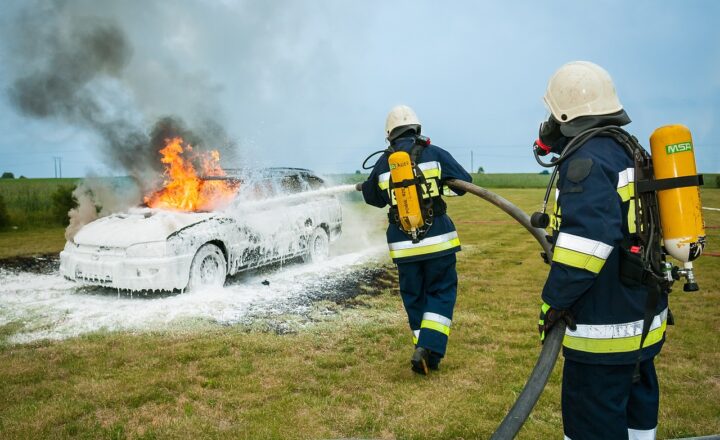How Firefighters Work with Community Volunteers to Improve Safety Response
November 13, 2024

Firefighters are an essential part of any community’s safety infrastructure. Beyond their core duty of fighting fires and responding to emergencies, many fire departments actively engage with community volunteers to enhance safety measures and build a resilient response network. This collaboration not only strengthens the bond between firefighters and the community but also increases operational efficiency during emergencies.
1. The Role of Community Volunteers in Fire Response
Community volunteers can take many forms – from those who support logistics in emergency situations to certified volunteer firefighters who are trained to assist in firefighting efforts. Each volunteer plays a pivotal role in bolstering community safety:
- Assisting During Emergencies: Volunteers can help set up command posts, transport equipment, or provide first aid to those in need. Their familiarity with the local area makes them invaluable during emergency evacuations or search-and-rescue operations.
- Educational Outreach: Volunteers often participate in educational programs in schools and community events, teaching fire safety protocols, conducting fire drills, and raising awareness about emergency preparedness.
- Logistical Support: Many fire departments rely on volunteers to handle administrative duties, freeing up firefighters to focus on emergency response. This may include scheduling, inventory management, or community outreach initiatives.
These diverse roles highlight how community volunteers can significantly impact fire safety and response capabilities.
2. Building Strong Volunteer Programs
For a volunteer program to be effective, it must be well-organized, transparent, and able to provide adequate training and support. The essential components of a successful volunteer fire program include:
- Recruitment and Retention: Departments should actively recruit volunteers through community engagement events, local media, and social platforms. Retaining volunteers requires regular training, recognition for their contributions, and fostering camaraderie among the team.
- Training and Certification: Community volunteers often undergo extensive training to ensure their skills align with professional firefighting standards. This may include certifications in CPR, first aid, and emergency medical response. In some cases, they can earn firefighting credentials, enabling them to assist during incidents under the supervision of career firefighters.
- Ongoing Communication: Fire departments must facilitate open lines of communication with volunteers to ensure everyone is informed about potential emergencies, training updates, and community events. Regular meetings and newsletters can help keep everyone connected and motivated.
These strategic areas of focus ensure community volunteer programs are robust and effective in improving safety responses.
3. Collaborative Community Initiatives
Fire departments frequently collaborate with community volunteers on safety initiatives designed to prepare residents for emergencies. These initiatives foster engagement while equipping citizens with the knowledge they need to protect themselves and their families:
- Community Drills: Conducting regular drills for fire evacuations or natural disasters helps familiarize residents with emergency procedures and enhances the coordination between the fire department and volunteers.
- Safety Workshops: Volunteers assist during workshops that teach lifesaving skills, such as hands-only CPR, the use of fire extinguishers, and basic first aid. Increasing community knowledge enhances overall safety and awareness during emergencies.
- Fire Prevention Campaigns: Volunteers play a crucial role in distributing educational materials and installing smoke detectors in underserved neighborhoods. Such efforts aim to reach high-risk families and cultivate awareness of fire hazards and prevention tactics.
Through these collaborative initiatives, firefighters and community volunteers forge a united front against potential emergencies, providing residents with essential skills and knowledge.
4. Technological Integration in Volunteer Programs
Modern technology is revolutionizing the way fire departments interact with their volunteers and the community:
- Apps for Communication: Fire departments now utilize mobile applications to communicate with volunteers for scheduling and real-time updates during emergencies. These apps streamline coordination and ensure everyone is on the same page during critical situations.
- Online Training Modules: Many fire departments are adopting online platforms for volunteer training. This flexibility allows volunteers to complete essential training at their convenience, ensuring they are prepared to assist during emergencies efficiently.
- Data Analysis for Resource Allocation: Departments leverage data analytics to determine high-risk areas and allocate volunteering resources effectively, optimizing response coverage in vulnerable neighborhoods during emergencies.
Embracing technology helps fire departments create a more effective and responsive collaboration between firefighters and volunteers.
5. Challenges Faced by Volunteer Programs
While the integration of community volunteers into firefighting efforts provides substantial benefits, challenges also arise that must be addressed:
- Resource Limitations: Many volunteer programs operate with limited funding, impacting training opportunities, resources, and retention efforts. Securing grants and community sponsorship can alleviate constraints and support proper training and equipment for volunteers.
- Volunteer Commitment: Engaging consistent volunteer participation can be challenging, especially if members have other job commitments. Departments should provide flexible schedules and incentives to retain committed volunteers.
- Liability and Risk Management: Volunteers may face significant risks while responding to emergencies. Proper insurance coverage and liability waivers must be in place to protect both volunteers and fire departments in case of accidents or injuries.
By recognizing and addressing these challenges, fire departments can enhance their volunteer programs and thereby strengthen their community safety response.
Conclusion
In deploying community volunteers, fire departments not only enhance their emergency response capabilities but also create a unified and safety-focused community. Through comprehensive training, collaborative initiatives, and ongoing support, these volunteer programs foster engagement and resilience among residents. Together, firefighters and community volunteers demonstrate the power of collective action, effectively reducing risks and promoting safety for all.
Engaging with community volunteers should be seen not just as an addition to fire department operations but as a vital lifeline that ensures a well-rounded and robust emergency response framework that benefits everyone in the community.








